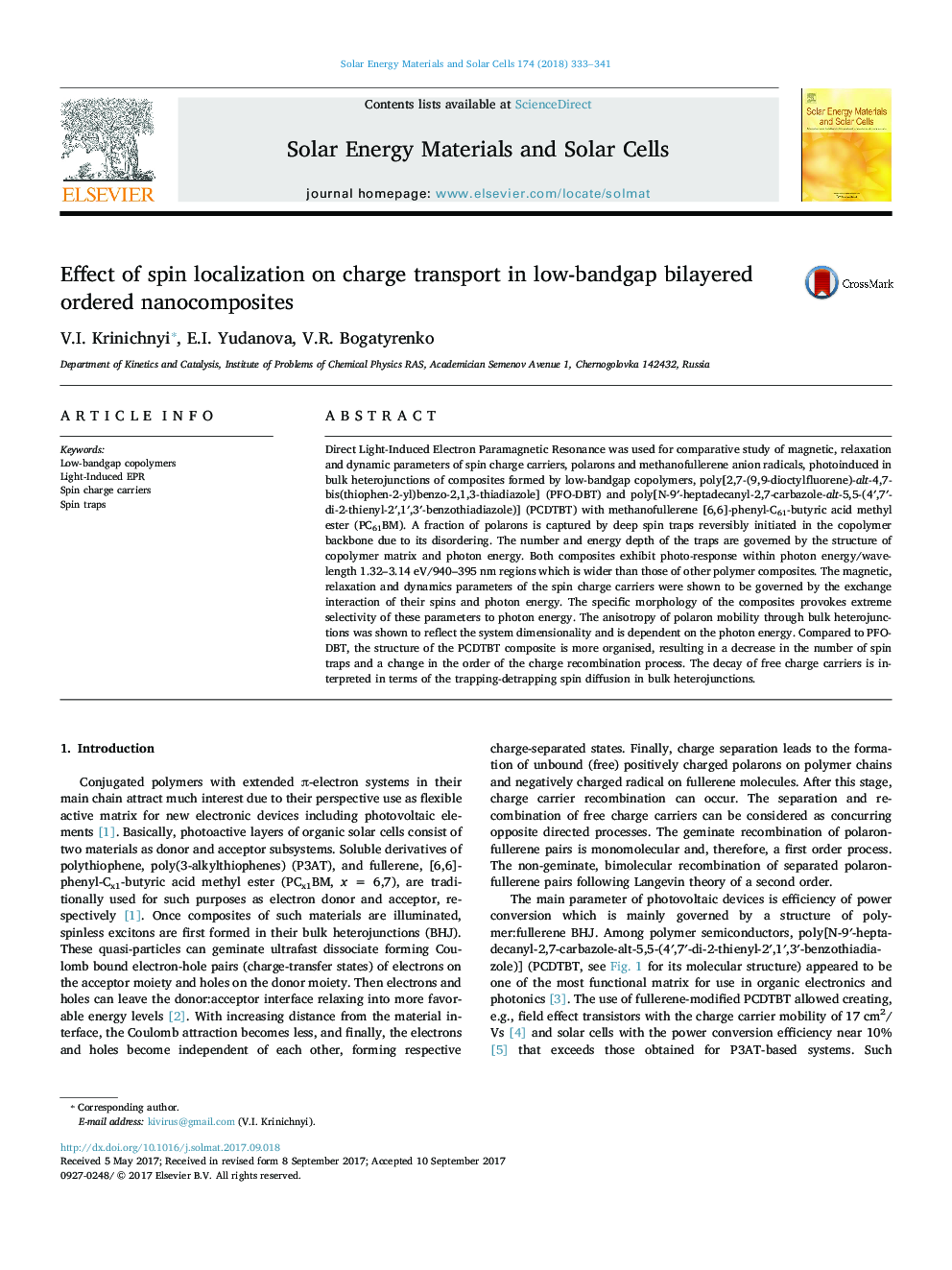| Article ID | Journal | Published Year | Pages | File Type |
|---|---|---|---|---|
| 6456686 | Solar Energy Materials and Solar Cells | 2018 | 9 Pages |
â¢We report spin-assisted photon-electron conversion by two low-bandgap composites within the solar IR-Vis-UV regions.â¢Mechanism of charge recombination was shown to depend on structure of composite matrix.â¢Relaxation and dynamics parameters of spin charge carriers were obtained upon background IR-Vis-UV illumination.â¢Spin-assisted charge transfer in the composites are governed by the spin traps and photon energy.
Direct Light-Induced Electron Paramagnetic Resonance was used for comparative study of magnetic, relaxation and dynamic parameters of spin charge carriers, polarons and methanofullerene anion radicals, photoinduced in bulk heterojunctions of composites formed by low-bandgap copolymers, poly[2,7-(9,9-dioctylfluorene)-alt-4,7-bis(thiophen-2-yl)benzo-2,1,3-thiadiazole] (PFO-DBT) and poly[N-9â²-heptadecanyl-2,7-carbazole-alt-5,5-(4â²,7â²-di-2-thienyl-2â²,1â²,3â²-benzothiadiazole)] (PCDTBT) with methanofullerene [6,6]-phenyl-C61-butyric acid methyl ester (PC61BM). A fraction of polarons is captured by deep spin traps reversibly initiated in the copolymer backbone due to its disordering. The number and energy depth of the traps are governed by the structure of copolymer matrix and photon energy. Both composites exhibit photo-response within photon energy/wavelength 1.32-3.14Â eV/940-395Â nm regions which is wider than those of other polymer composites. The magnetic, relaxation and dynamics parameters of the spin charge carriers were shown to be governed by the exchange interaction of their spins and photon energy. The specific morphology of the composites provokes extreme selectivity of these parameters to photon energy. The anisotropy of polaron mobility through bulk heterojunctions was shown to reflect the system dimensionality and is dependent on the photon energy. Compared to PFO-DBT, the structure of the PCDTBT composite is more organised, resulting in a decrease in the number of spin traps and a change in the order of the charge recombination process. The decay of free charge carriers is interpreted in terms of the trapping-detrapping spin diffusion in bulk heterojunctions.
Graphical abstractDownload high-res image (151KB)Download full-size image
